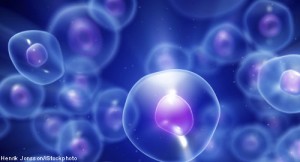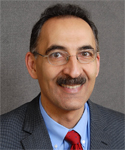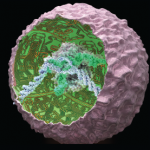 ACR Convergence 2020—On Nov. 8, 2020, Farshid Guilak, PhD, professor of orthopedic surgery at Washington University, St. Louis, Mo., and Shriners Hospitals for Children—St. Louis, gave the Oscar S. Gluck, MD, Memorial Lecture, describing his program’s multi-disciplinary approach to the treatment of arthritis.
ACR Convergence 2020—On Nov. 8, 2020, Farshid Guilak, PhD, professor of orthopedic surgery at Washington University, St. Louis, Mo., and Shriners Hospitals for Children—St. Louis, gave the Oscar S. Gluck, MD, Memorial Lecture, describing his program’s multi-disciplinary approach to the treatment of arthritis.
Dr. Guilak began by describing osteoarthritis (OA) and rheumatoid arthritis (RA) as two different diseases sharing a common pathway of inflammation. His laboratory focuses on combining tissue engineering and stem cells to create a treatment for arthritis that can, at minimum, delay joint replacement.
At its core, regenerative medicine uses stem cells to regenerates cells, tissues and organs to restore function. Stem cell therapy is the injection of stem cells into the body to treat disease, and tissue engineering combines cells, biomaterials and molecules to regenerate tissues and organs. Thus, it requires the creation of scaffolds of biocompatible materials that support tissue regeneration. These scaffolds can be made of soft gels with high-water content, which can be beneficial, but also result in a weak scaffold, making them unsuitable for withstanding joint loading.
Instead of gels, Dr. Guilak’s laboratory creates composite scaffolds of biocompatible fibers woven in three orthogonal directions (3D). The fibers can be woven tightly or loosely, and after the scaffold is created, they can be infiltrated with stem cells. These stem cells are then converted to cartilage or bone-producing cells. Over time, the biocompatible fibers are resorbed by the body. The result is a bioartificial cartilage with the properties of normal cartilage.
Dr. Guilak and colleagues use magnetic resonance imaging (MRI) or computed tomography (CT) to image patient joints and create anatomically shaped scaffolds that can be used for total joint resurfacing. The images can be used to create a computer aided design (CAD) model, allowing the virtual construction of a molded scaffold. The patient then undergoes liposuction, and stem cells are separated from the fat in the recovered tissue. The combination of the stem cells with the scaffold can create a bioartificial joint replacement.
These custom-designed stem cells have the potential to provide auto-regulated drug delivery & enhanced tissue repair, thereby revolutionizing the treatment of arthritis.
Inflammation
In patients with arthritis, inflammation persists even after the joints are resurfaced. Unfortunately, stem cells are exquisitely sensitive to this inflammation. Although biologic therapies may successfully treat autoimmune diseases, they are only partially successful at treating episodic disease flares seen in RA. Thus, Dr. Guilak and colleagues asked the question: Is it possible to repair tissue and resolve inflammation?

